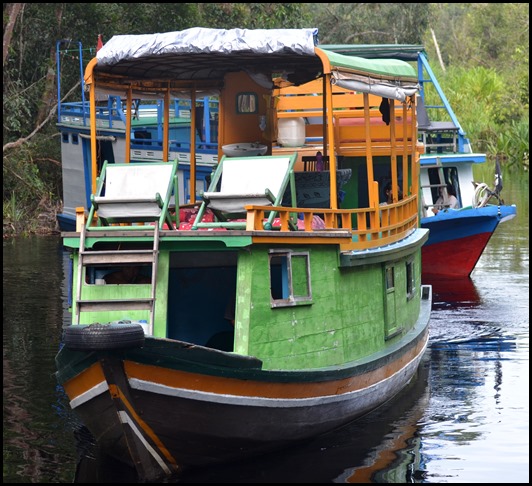Mama 1

|
Moving on to
Mama 1 and Heading Up the River
 We bid ‘farewell’ to our beloved Beez as we speed off on our water taxi. The two sons
of our driver are moving aboard this afternoon (only in the cockpit – which is
the norm), I offered them twice the going rate if they clean my chrome – the
princely sum of ten pounds per day. With Beez safe and looked after we can enjoy
three nights, four days of a major tick on the Bucket List whilst living on a
klotok...........To see the orangutans of the National Park.
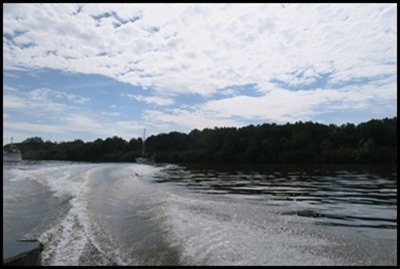 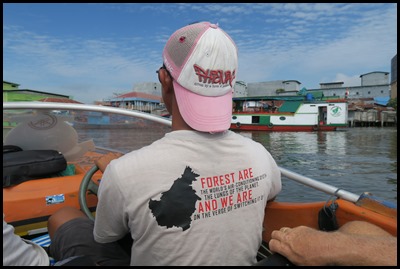  As we turned back from Beez we both read the tee
shirt in front of us. Such a powerful
slogan.
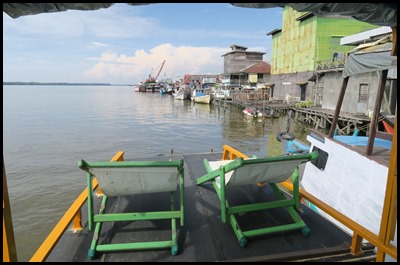 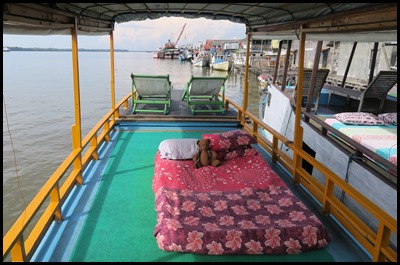 Soon settling aboard Mama 1
we loved the front deckchairs but Beds did begin to
wonder about the lumpy bed.......
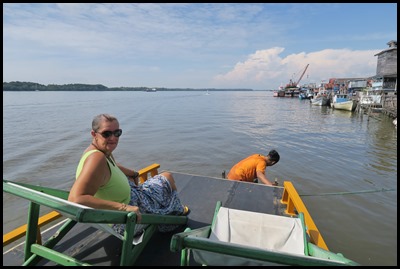  We both tried the
chairs as the crew began to ready for the off.
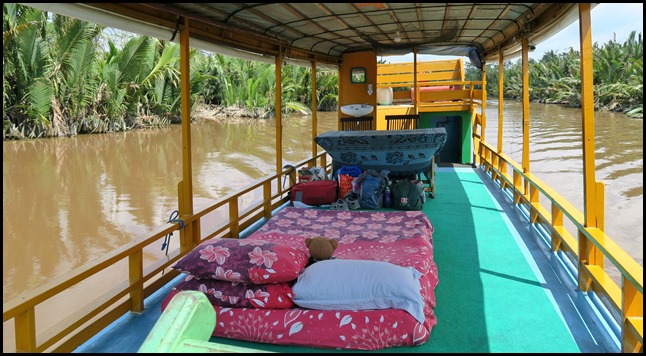 From the front
looking beyond our bed – our luggage, dining table, wash basin and down
the three steps at the back of the boat the toilet with pail of water to flush
straight into the river and shower giving coolish water. Behind the sink a
couple of steps lead to a bench providing a higher seat. At night privacy as a
mosquito net is dropped around the bed and if it rains.......most
days.......plastic blinds are rolled down. All the staff (cook and her young
son, crew, captain and guide) bunk in the one room downstairs sharing our toilet
and shower.
 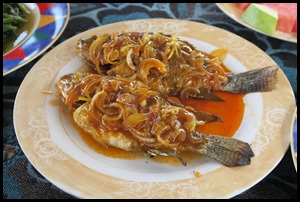 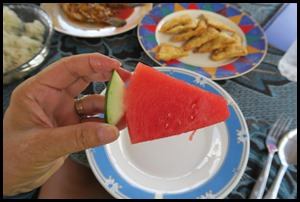 Our first lunch
was delicious, we chose to come alone on a two-guest klotok for me to not
have to worry about herbs and garlic – if all our meals are like this – I’m a
very happy tourist. Amazing, all the years we have eaten watermelon, this was
the first time we have ever had ‘handles’, so simple but so
effective.
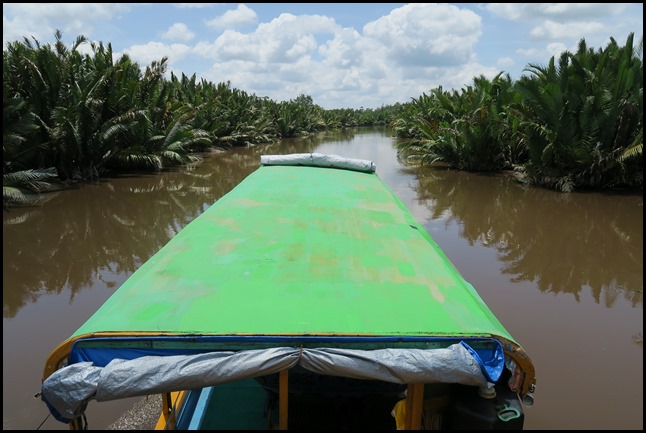 From the back looking out as we had
first entered the Sekonyer River, sadly, palm oil
plantations left and right.
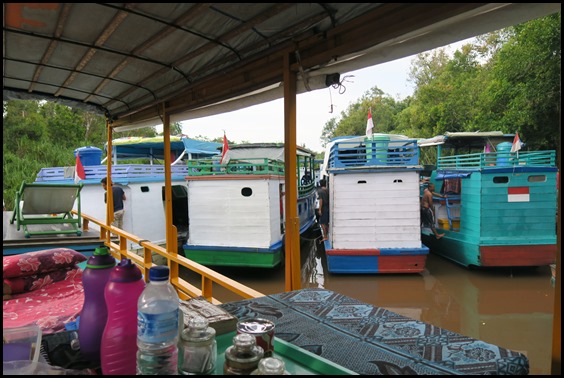 Parking at
our first stop, number one feeding station.
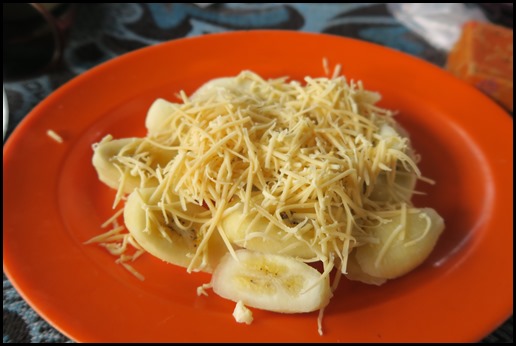 A very excited pair boarded Mama 1
after our first orang utans. Our afternoon snack was
the weirdest thing – sliced banana with grated cheese topped with condensed
milk. Unsure about such a combination we put just a small dab of milk on - It
really worked. Soon dolloping out bigger dabs of the thick, rich condensed we
polished the lot off. Since this first try we have been known to serve it on
Beez.
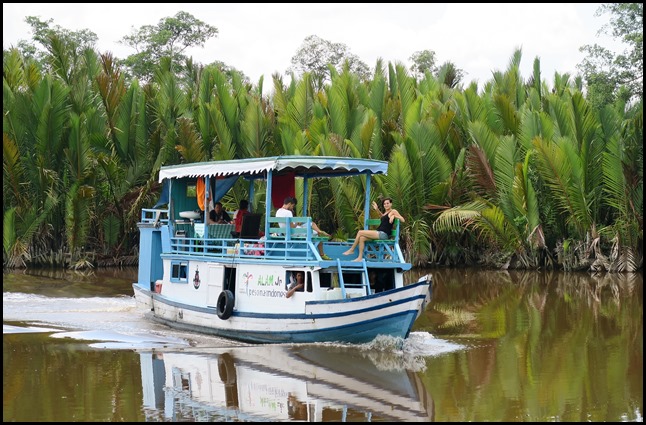 A rather handsome
klotok on the river (sadly, more palm oil plantation as a backdrop). Most
layouts are the same and they all sound alike. The boat's name refers to
the noise it makes, “klok tok tok tok” some are noisier than others but
you soon get used to it.
 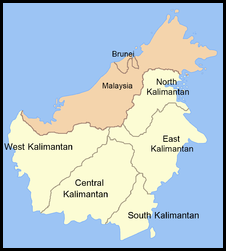 A little about the area. The Indonesian territory makes up 73% of the island by area,
and 69.5% (13,772,543 at the 2010 Census of Indonesia) by population. The non-Indonesian parts of Borneo are of
Brunei (400,000) and East
Malaysia (5,625,000), the latter comprising the
states of Sabah, Sarawak and the federal territory of
Labuan. The region within Indonesia is also known as Indonesian
Borneo. Kalimantan's total area is 544,150 square kilometres (210,097
square miles).
 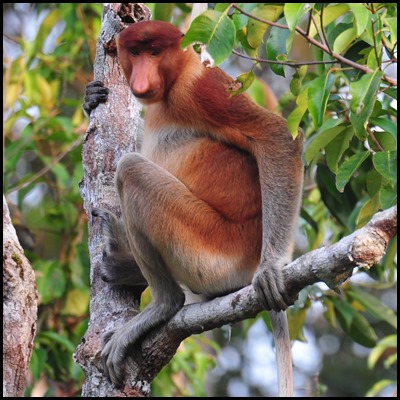 The park was set aside in the 1930’s by the Dutch colonial government for the protection of the orangutans (our first) and proboscis monkey (our first), and was designated as a UNESCO Biosphere Reserve in 1977 and a national park in 1982. In addition to orangutans and proboscis monkeys, the park is also home to gibbons, macaques, clouded leopards, sun bears, wild boars, porcupines, and sambar deer. The park also features many reptiles, including crocodiles, monitor lizards, and pythons, birds, including hornbills and kingfishers, and insects, such as the giant Bornean butterfly. The Pondok Ambung Tropical Forest Research Station was established in 2005 for the study of all wild species found in the park. Today Tanjung Puting National Park is a popular ecotourism destination, with many local tour companies offering multi-day boat tours to view wildlife and visit the research centres. The park was home to 105,000 people as of 1997. The park was heavily damaged by fires in 1997 and 1998, and today remains threatened by illegal logging, illegal mining, and forest clearing for agricultural uses. Conservation efforts by Indonesian NGO Friends of the National Parks Foundation is leading towards a slow but progressive reforestation of damaged areas. Their reforestation work has seen the planting of thousands of saplings in the area to recreate habitat for the endemic wildlife in the area.
Mama
1 coming across from her parking spot to pick us up from our Camp
Leakey stop.
 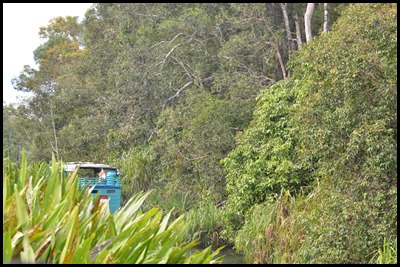 Following another
klotok up river to find a space in the ‘hedge’ to park for the night. So
pleased to be in real jungle. Soon our new friend was swallowed by her surroundings.
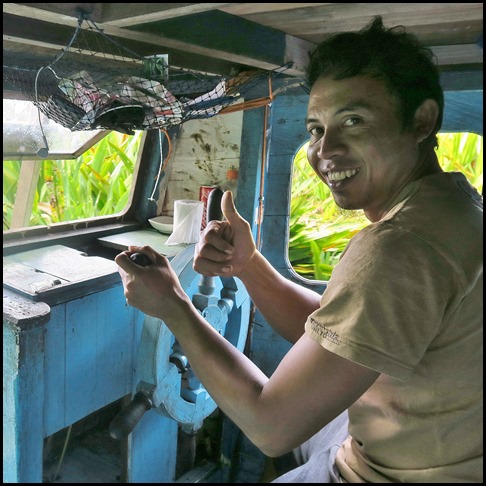 Our skipper
at his post.
 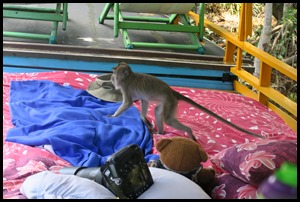  Beds was in short horror when we had
a small visitor. He returned later and took several
of our Triomino pieces thinking they were snacks. We knew nothing of this until
later, we returned from a feeding station to find our skipper soaking
wet............He had dived in to retrieve a few pieces for us – sadly, the
treble five was missing. New game required, literally a little
monkey.............
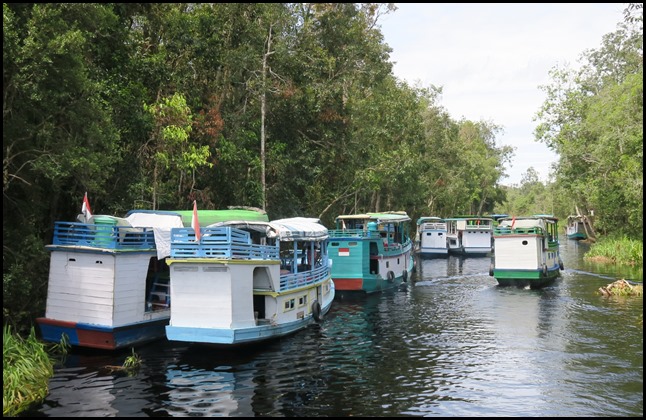 A busy time at
Camp Leakey...............
 ................so
worth it.
ALL IN ALL THE START OF
SOMETHING VERY SPECIAL
WELL ORGANISED AND
HOMELY |
